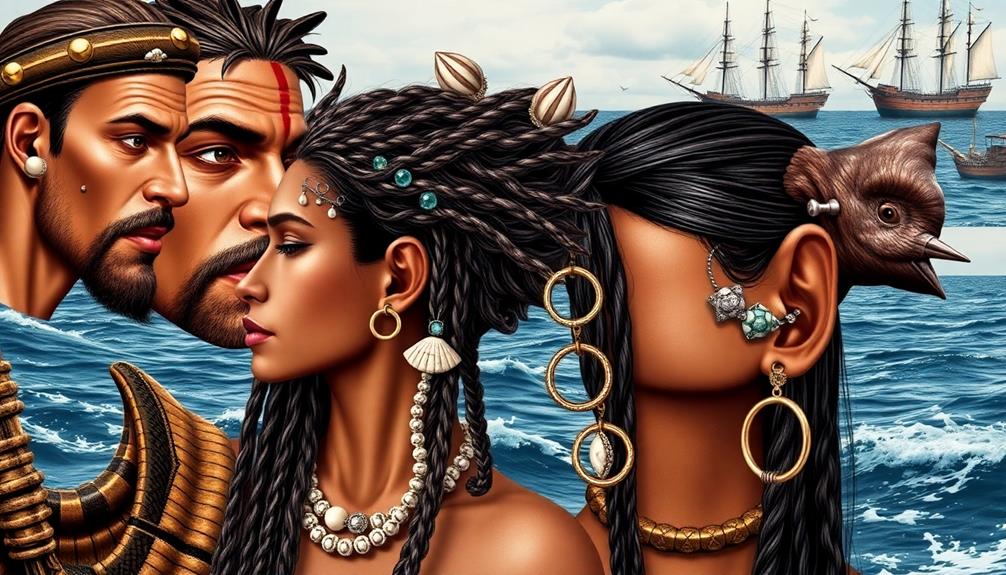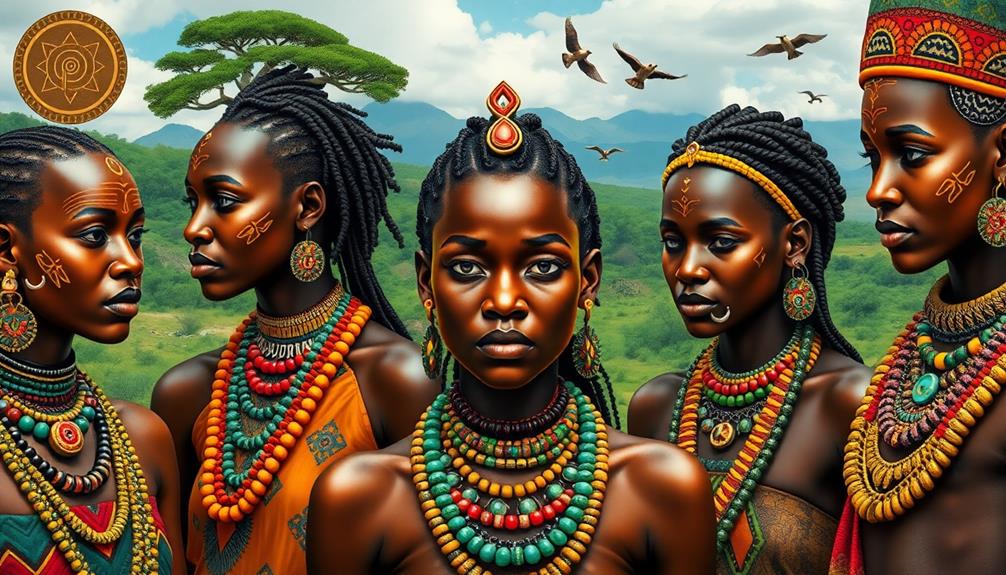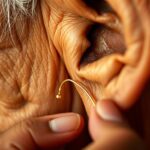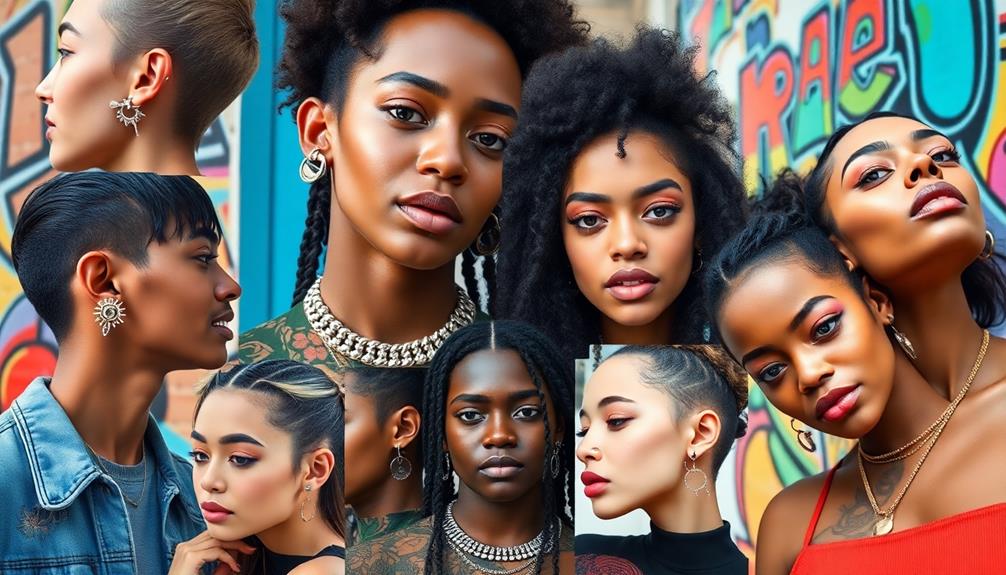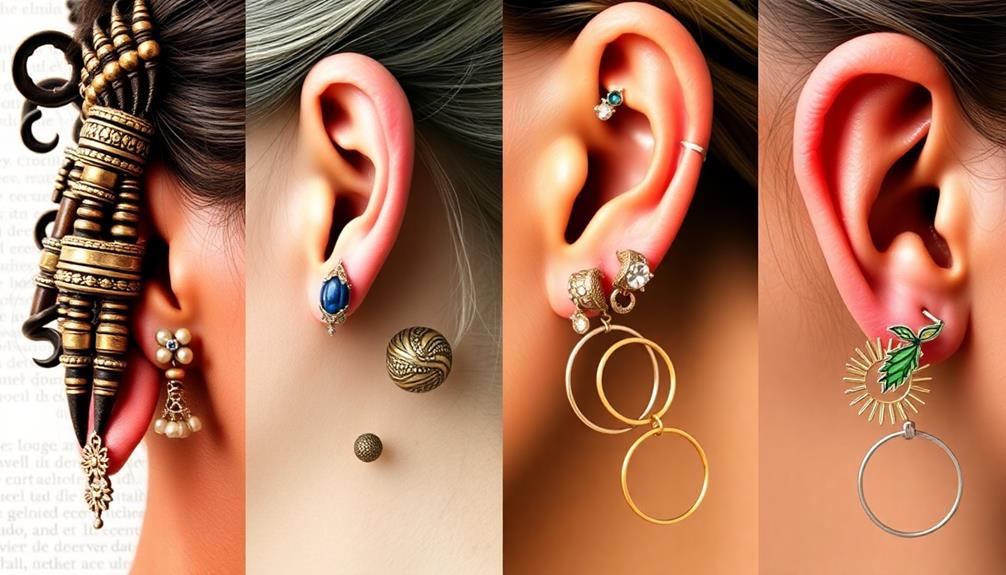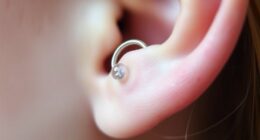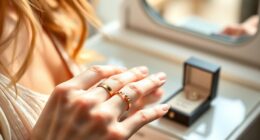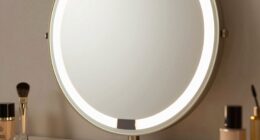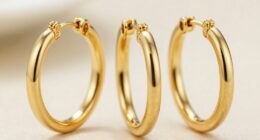Naval piercings have a rich history, starting in ancient Egypt where they symbolized wealth and status. Over the years, they evolved into a contemporary fashion statement popularized by celebrities in the 1990s, like Christy Turlington. Today, these piercings are celebrated for personal expression and body autonomy, especially among women. Modern jewelry options range from elegant solid gold to embellished designs with real diamonds. While they offer aesthetic appeal, it's important to prioritize safety and aftercare to prevent infections. If you're curious about how this trend connects to today's fashion and culture, there's plenty more to explore.
Key Takeaways
- Naval piercings originated in ancient Egypt as symbols of wealth, evolving into modern expressions of body autonomy and personal style.
- The popularity of navel piercings surged in the 1990s, influenced by celebrities like Christy Turlington and Naomi Campbell.
- Social media platforms like Instagram and TikTok have amplified the visibility and acceptance of navel piercings, promoting individual expression.
- Modern jewelry styles include curved barbells and innovative designs like clip-on versions, catering to diverse tastes and preferences.
- Health risks associated with navel piercings necessitate proper aftercare and hygiene practices to prevent infections and ensure safe healing.
Origins of Naval Piercings

Navel piercings have a fascinating history that spans various cultures and centuries. The origins can be traced back to ancient Egypt, where it was thought to signify wealth and status among the aristocracy. However, concrete evidence supporting this claim is limited, leading many historians to question its accuracy.
Fast forward to the 1990s, and you'll find the first documented instance of navel piercing in Western culture, largely popularized by fashion icons like Christy Turlington during a 1993 fashion show.
Since then, navel piercings have evolved considerably, becoming symbols of body autonomy and personal expression, particularly among women. This shift reflects broader societal trends in body modification, where women often pursue navel piercings to enhance their body image and self-perception.
The trend gained considerable traction in Western fashion during the late 20th century, moving from an aristocratic symbol to a mainstream choice for personal adornment. Today, navel piercings represent more than just a fashion statement; they embody a form of self-expression, allowing you to celebrate your individuality and body image in a world that often dictates standards.
Cultural Significance Throughout History
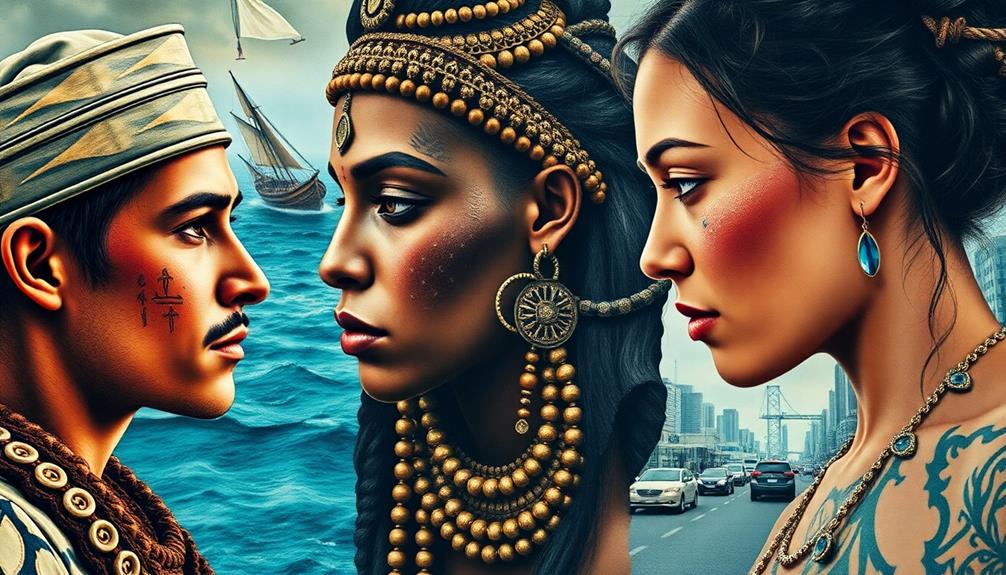
Throughout history, many cultures have imbued navel piercings with significant meaning, often linking them to femininity and beauty standards. While the historical records on naval piercings are sparse, they've been symbolically tied to body image across various societies. In ancient Egypt, some aristocrats reportedly wore them as a status symbol, though definitive evidence is still up for debate.
The cultural significance of navel piercings surged in the 1990s, largely influenced by pop culture icons like Christy Turlington and Britney Spears. Their visibility helped shift societal perceptions, making navel piercings a sought-after accessory for self-expression.
Today, many women pursue these piercings to enhance their body image and boost self-perception, as highlighted by a 2022 study.
Additionally, social media platforms have played an essential role in amplifying the acceptance and popularity of navel piercings. What was once a niche practice has now become a mainstream fashion statement, showcasing how personal adornment can reflect broader cultural trends.
Ultimately, naval piercings continue to signify femininity and personal choice, evolving with societal norms while fostering individual expression.
Evolution of Navel Piercing Trends
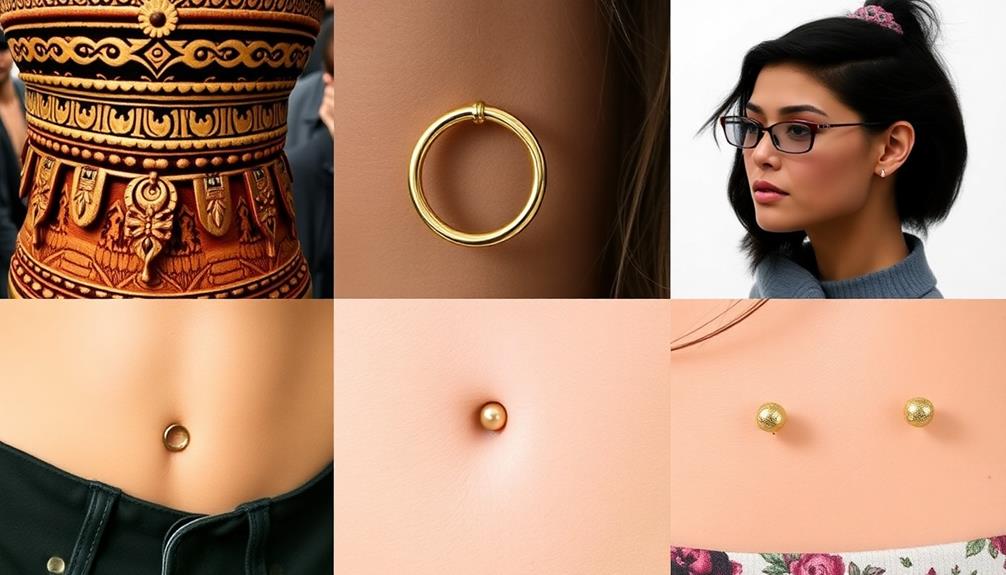
As trends evolve, navel piercings have transformed from a symbol of status in ancient Egypt to a contemporary fashion statement embraced by many.
In the 1990s, navel piercings gained significant mainstream popularity, particularly after Christy Turlington showcased them during her iconic 1993 fashion show. This resurgence was heavily influenced by pop culture figures like Britney Spears, who popularized the look through her music videos and public appearances.
Today, more women pursue navel piercings to enhance their body image and express their individuality, reflecting a growing cultural emphasis on body autonomy and self-expression.
The late 2020s have seen a notable revival of navel piercings, tapping into a nostalgic yearning for early 2000s aesthetics, as highlighted in various Vogue articles.
Social media platforms have played an essential role in amplifying navel piercing trends, with celebrities acting as key trendsetters. Their influence has led to a wider acceptance of diverse designs and jewelry options, making navel piercings more accessible and popular than ever.
As you explore the world of navel piercings, you'll find a unique blend of history, culture, and personal expression shaping this beloved adornment.
Popular Jewelry Styles and Innovations
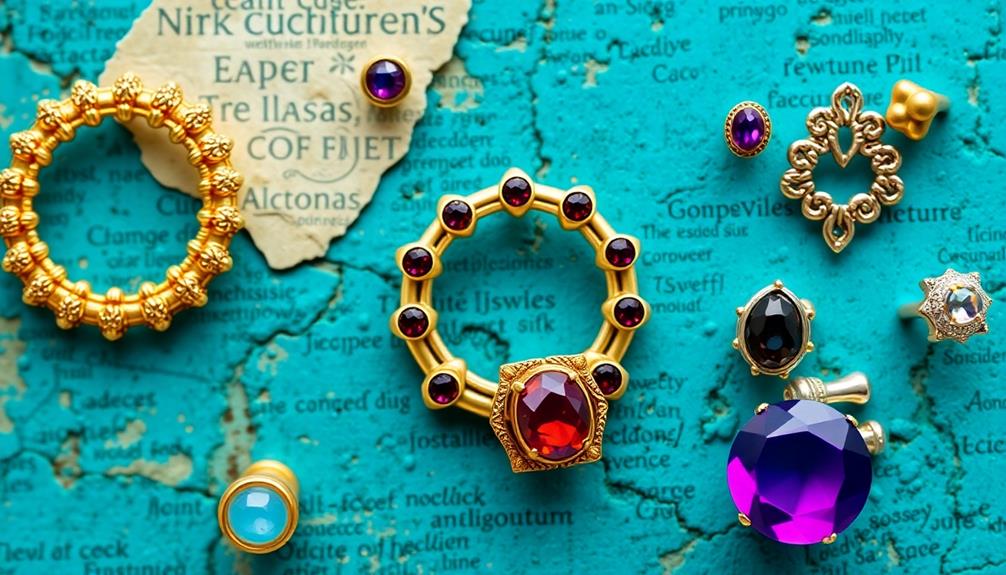
When it comes to navel piercings, you'll find a variety of popular jewelry styles, like curved barbells and enchanting bead rings.
Innovations, such as TummyToys' snap lock belly rings, are reshaping your options and making it easier to express your personal style.
Plus, the range of materials—from solid gold to real diamonds—means you can choose pieces that reflect your quality preferences.
Common Jewelry Types
In the world of navel piercings, a variety of jewelry types offer both style and innovation that cater to personal tastes. You'll find common choices like curved barbells, captive bead rings, and decorative designs, often referred to as belly button rings. These pieces typically measure 1.6mm in thickness and come in lengths of 9.5mm or 11mm, ensuring a comfortable fit.
Modern trends have introduced exciting options, including TummyToys' huggy belly rings, which feature unique snap lock clasps for added comfort and security. If you prefer a touch of luxury, there are embellished jewelry designs made from real diamonds and solid gold, appealing to diverse aesthetic preferences.
For those who don't want a pierced navel, clip-on versions of navel jewelry have emerged, expanding accessibility in body adornment.
Additionally, the trend towards personalized designs allows you to express your unique style, reflecting individuality within contemporary body modification culture. With so many choices available, you can easily find the perfect navel piercing jewelry that resonates with your personal flair.
Innovative Designs
The world of navel piercings is constantly evolving, bringing fresh and innovative designs to the forefront. You'll find that popular jewelry styles like curved barbells and belly rings are now available in a variety of unique designs.
TummyToys has even introduced huggy belly rings, featuring snap lock clasps for added security and comfort, showcasing how innovation meets functionality.
Embellished navel jewelry has also taken personal expression to new heights. With options including real diamonds and solid gold pieces, you can effortlessly blend luxury with your style.
The rise of clip-on versions means that even those without pierced navels can join in on the trend, expanding accessibility for everyone who wants to embrace modern aesthetics.
As fashion trends shift, so do the designs of navel piercings. You can experiment with different styles and materials, reflecting your unique personality.
Each innovative design not only enhances your look but also celebrates the artistry of body jewelry. Ultimately, navel piercings are more than just accessories; they're a canvas for self-expression and creativity.
Materials and Quality
What materials make navel piercings both stylish and durable? The world of belly rings and curved barbells offers a range of high-quality options that cater to your aesthetic preferences while guaranteeing longevity.
Here are three popular styles:
- Solid Gold: This classic material not only looks luxurious but also resists tarnishing. Gold belly rings are perfect for those who want something timeless.
- Diamonds: For a touch of elegance, embellished jewelry featuring real diamonds elevates your navel piercing, making it a stunning focal point.
- Innovative Designs: TummyToys has revolutionized navel jewelry with their huggy belly rings, introducing snap lock clasps for added security and ease of use.
With standard navel barbells measuring 1.6mm in thickness and available in lengths of 9.5mm or 11mm, you can find the perfect fit for your body type.
Plus, clip-on versions have increased accessibility for those without pierced navels, allowing everyone to enjoy stylish navel adornments.
Whether you prefer a simple curved barbell or an extravagant piece, the right materials and quality will guarantee your navel piercing remains a beautiful accessory.
Health Risks and Safety Precautions
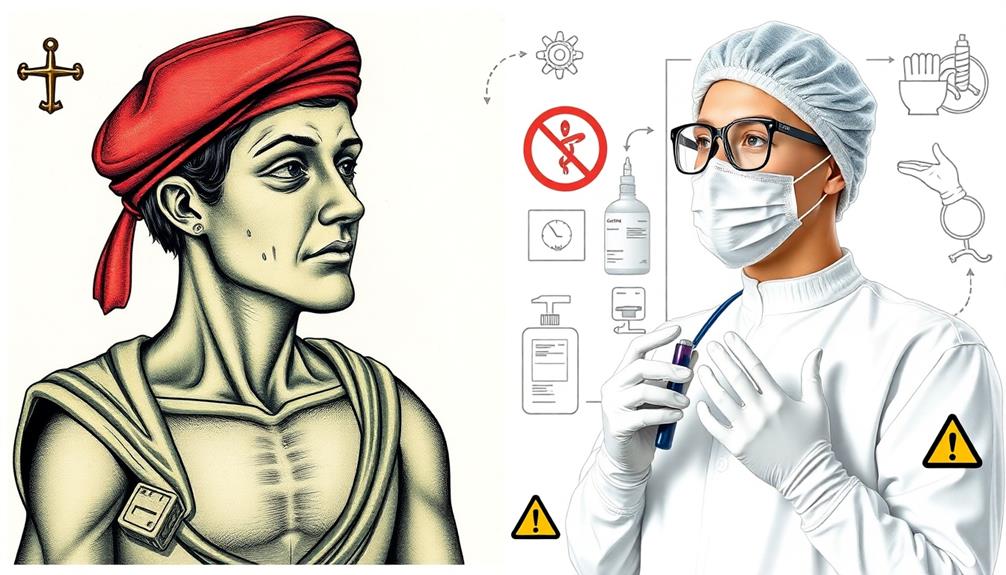
Navel piercings can pose significant health risks if proper precautions aren't taken. The healing process can take anywhere from 6 to 12 months, with some healing extending up to 2 years. During this time, maintaining cleanliness is vital to prevent infection, which is heightened by exposure to sweat and bacteria.
| Health Risk | Description | Precautions |
|---|---|---|
| Infection | Bacteria can enter through the piercing site. | Follow sterile techniques. |
| Allergic Reactions | Jewelry made from nickel can cause irritation. | Use hypoallergenic materials. |
| Scarring/Piercing Rejection | Body may expel jewelry or leave marks. | Monitor the healing process. |
To minimize complications, it is important to adhere to aftercare protocols. Between 2006 and 2019, nine fatalities in the U.S. were linked to infections from navel piercings, underscoring the need for vigilance. Always opt for surgical steel or titanium to reduce allergic reactions. By prioritizing cleanliness and monitoring for signs of scarring or rejection, you can enjoy your navel piercing while safeguarding your health.
Aftercare for Navel Piercings

Caring for your navel piercing is vital during the healing process to avoid complications and guarantee it heals properly.
Navel piercings typically require a healing period of 6 to 12 months, and proper aftercare is critical to prevent infections and guarantee ideal healing.
Here are three key aftercare tips for your navel piercing:
- Clean Regularly: Use a saline solution or a mild, fragrance-free soap to clean your piercing twice daily. This helps maintain hygiene and reduces irritation.
- Monitor for Signs of Infection: Keep an eye out for symptoms such as increased redness, swelling, or discharge. If you notice any signs of infection, consult a healthcare professional immediately.
- Wear Loose-Fitting Clothing: Avoid tight belts or waistbands to minimize friction on the healing piercing. Opt for loose-fitting clothing to reduce irritation during the healing period.
Influence of Social Media and Celebrities
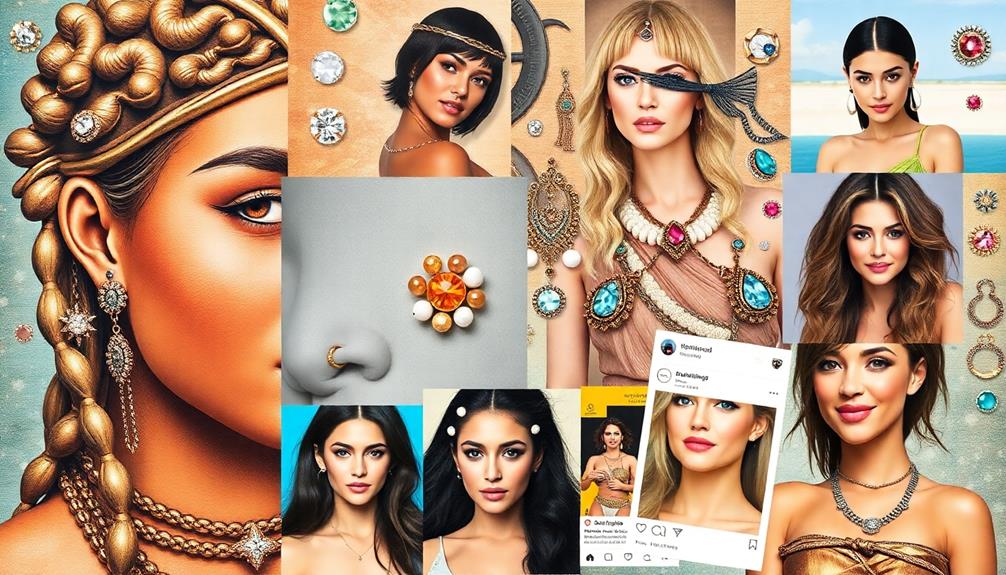
The healing process of a navel piercing can make you more aware of the cultural trends surrounding it. In the 1990s, pop culture icons like Britney Spears brought navel piercings into the spotlight, showcasing them in performances and music videos. This trend didn't just fade; it evolved, especially with the rise of social media.
Platforms like Instagram and TikTok have amplified the visibility of body piercings, making them a staple in contemporary aesthetics. Influencers now flaunt unique styles, encouraging you to embrace your individuality through navel piercings. Additionally, this resurgence aligns with the current trend of exploring personal expression and body art, similar to the way horoscope insights influence our choices in beauty and lifestyle.
A 2022 study revealed that many women pursue these piercings to enhance their body image and self-perception, reflecting the societal beauty standards often seen online. Celebrities such as Christy Turlington and Naomi Campbell have historically shaped perceptions of navel piercings, increasing their acceptance and popularity over the decades.
The 2024 revival of belly button piercings, highlighted in fashion articles from Vogue, showcases a cultural nostalgia for this trend. As you consider your navel piercing, remember you're participating in a rich tapestry of fashion and self-expression influenced by both celebrities and social media.
Frequently Asked Questions
What Is the History of the Navel Piercing?
Navel piercings have evolved over time, with roots often debated. In the '90s, their popularity soared thanks to pop culture icons, reflecting a growing trend in body expression and personal style you might appreciate today.
What Is the Historical Background of Piercing?
When it comes to body art, piercing's been around for ages. You'll find its roots in ancient cultures, where it symbolized status, spirituality, and self-expression, evolving into a personal statement in today's world.
What Does a Belly Button Piercing Symbolize?
A belly button piercing symbolizes your body autonomy and personal expression. It allows you to embrace your individuality while reflecting contemporary beauty standards, boosting your confidence and enhancing your self-perception in today's fashion-forward culture.
What Is the Cultural History of the Septum Piercing?
The septum piercing has deep cultural roots, symbolizing tribal identity in ancient societies. Over centuries, it evolved, showcasing beauty in India and representing rebellion in punk culture, ultimately becoming a fashionable statement of personal expression today.
Conclusion
In the grand tapestry of body adornment, navel piercings have woven their own vibrant thread, connecting ancient traditions to modern styles. As you explore your own journey with this piercing, remember it's not just an aesthetic choice—it's a celebration of individuality. So, whether you're drawn to its rich history or the latest trends, let your navel piercing tell your unique story, shining like a beacon of self-expression in a world keen to embrace diversity.

